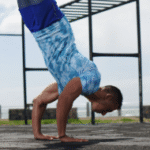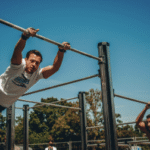Calisthenics Progressions: How to Level Up Your Training
Calisthenics progressions are a systematic way to gradually increase the difficulty of bodyweight exercises, allowing you to continually challenge yourself and make progress toward your fitness goals. Whether you’re a beginner just starting or an experienced athlete aiming for advanced skills, understanding and implementing progressions is crucial for long-term success in calisthenics.
Why Progressions Matter:
Prevent Plateaus: By consistently increasing the challenge, you avoid hitting plateaus and keep your body adapting and growing stronger.
Reduce Injury Risk: Gradual progression allows your body to adapt to the increasing demands, minimizing the risk of injuries.
Build Confidence: As you master easier variations and progress to more challenging ones, you build confidence and a sense of accomplishment.
Achieve Advanced Skills: Progressions provide a structured path to mastering complex calisthenics skills like handstands, muscle-ups, and levers.
Key Methods of Progression:
Increasing Repetitions: Perform more repetitions of an exercise before reaching muscle failure.
Adding Sets: Increase the number of sets per exercise.
Reducing Rest Time: Shorten the rest periods between sets to increase the intensity.
Increasing Range of Motion: Perform exercises with a greater range of motion (e.g., deeper squats, lower push-ups).
Adding Weight: Use weighted vests, resistance bands, or other external weights to increase the resistance.
Changing Leverage: Modify the exercise to make it more challenging by changing the position of your body or limbs (e.g., decline push-ups, archer pull-ups).
Unilateral Exercises: Perform exercises on one side of the body at a time (e.g., single-leg squats, one-arm push-ups) to increase the challenge and address imbalances.
Combining Exercises: Combine two or more exercises into a more complex movement (e.g., burpees, muscle-ups).
Examples of Calisthenics Progressions:
Push-ups: Wall push-ups -> Incline push-ups -> Regular push-ups -> Decline push-ups -> Diamond push-ups -> One-arm push-ups
Pushup progressions
Pull-ups: Assisted pull-ups (using bands or a chair) -> Negative pull-ups -> Regular pull-ups -> Weighted pull-ups -> Archer pull-ups -> One-arm pull-ups
Pullup progressions
Squats: Chair squats -> Assisted squats -> Regular squats -> Bulgarian split squats -> Pistol squats
Squat progressions
L-sit: Tuck L-sit -> One-leg extended L-sit -> Straddle L-sit -> Full L-sit
Lsit progressions
Tips for Implementing Progressions:
Start with a Solid Foundation: Master the basic exercises before moving on to more advanced variations.
Assess Your Current Level: Honestly evaluate your abilities and choose progressions that are challenging but achievable.
Be Patient and Consistent: Progress takes time and effort. Don’t get discouraged if you don’t see results immediately.
Listen to Your Body: If you’re feeling pain, stop and rest. Don’t push yourself beyond your limits.
Track Your Progress: Keep a record of your workouts and note your progress. This will help you stay motivated and make adjustments as needed.
Seek Guidance: If you’re unsure about how to progress, consider working with a calisthenics coach or trainer.
By understanding and implementing calisthenics progressions, you can unlock your full potential, achieve your fitness goals, and enjoy a lifetime of progress and improvement.

Calisthenics Progressions: How to Level Up Your Training
Route
Calisthenics Gym Houston Functional Bodyweight Training
Secondary phone: (346) 483-3195
Email: info@calisthenicsclubhouston.com
URL: https://calisthenicsclubhouston.com/
Monday 6:00 AM - 7:00 PM Tuesday 6:00 AM - 7:00 PM Wednesday 6:00 AM - 7:00 PM Thursday 6:00 AM - 7:00 PM Open now Friday 12:00 PM - 6:30 PM Saturday 9:45 AM - 12:00 PM Sunday 3:00 PM - 5:00 PM





